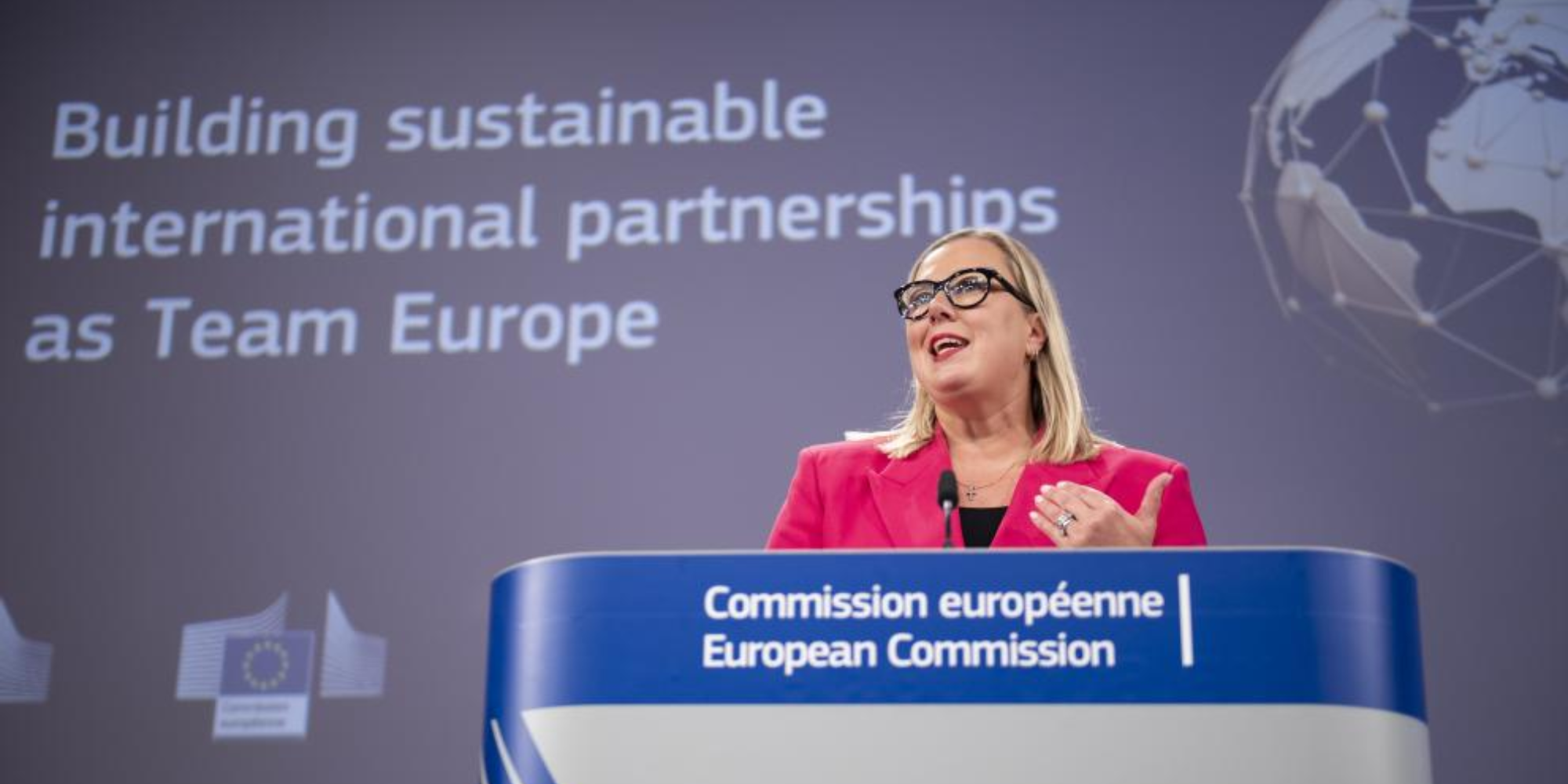The European Commission has adopted a Communication on “building sustainable international partnerships as a Team Europe,” taking stock of the progress achieved in the field of International Partnerships. Over the past five years, EU has revamped its model of cooperation in response to the evolving geopolitical and geoeconomic landscape and global challenges, notably the growing gap to achieve the Sustainable Development Goals. The EU has moved away from donor-recipient dynamics towards mutually beneficial partnerships, which bring benefits to the local populations and strengthen resilience at home and abroad. This approach was embodied in the Global Gateway investment strategy launched in 2021. By investing in partnerships, the EU seeks to position itself in an increasingly contested international environment.
Amidst the COVID-19 pandemic, the European Union institutions, EU Member States, and European development financial institutions first pushed for joint responses in a Team Europe spirit, which has since become an integral part of the EU’s external action toolbox allowing the EU to increase the scale, impact, and visibility of its actions. Bringing on board also the private sector, Team Europe approach has been the main delivery mechanism of the EU’s Global Gateway investment strategy.
Global Gateway is expected to mobilise up to €300 billion is sustainable public and private investments by the year 2027. Between 2021-2023, €179 billion in investments have been mobilised in in our partner countries across the world, advancing 225 flagship projects. Out of these, €50 billion were supported by the European Commission and €129 billion were mobilised by EU Member States, the EIB and the EBRD.
The Global Gateway strategy focuses on five priority areas, each backed by concrete projects across various regions. Some examples include:
- Climate and Energy: Global Gateway supports investments in renewable energy and infrastructure, such as the green hydrogen facilities in Namibia to harness wind and solar power, as well as rare earth resources. This partnership aims to make Namibia a leader in green energy, contributing to global climate goals. The EU is supporting Costa Rica’s National Decarbonisation Plan, focusing on electrifying public transport and turning the harmful Sargassum alga into an economic resource through research and collaborations in sectors like cosmetics and biomass production in the Caribbean basin.
- Digital Transition: The EU has launched five Digital Economy Packages to foster human-centric digital growth. A key example is the Copernicus Earth Observation Programme in the Philippines, which uses satellite data for disaster risk management and improves connectivity infrastructure. The EU has also launched the EU Latin America and Caribbean Digital Alliance to boost comprehensive cooperation on digital transition, including policy dialogue on cybersecurity.
- Transport Connectivity: To improve infrastructure and regulatory frameworks, the EU has undertaken to support large-scale projects like the Trans-Caspian Transport Corridor and€ the Lobito Corridor to enhance trade routes between Europe, Asia, and Africa. The Lobito Corridor will improve the connection between Angola’s Lobito Port to the Democratic Republic of the Congo and Zambia, whilst the Trans-Caspian project will strengthen Central Asia’s role as a connectivity hub.
- Health: The EU’s Global Health Strategy, focuses on strengthening health systems and pharmaceutical supply chains, deliver better health and prevent health threats. For instance, the Team Europe Initiative on vaccines and medicines improves access to vaccines and healthcare in Africa, including the creation of local manufacturing capacities, which is vital for boosting resilience in the face of global health challenges.
- Education and Research: The EU has increased its investment in education from 7% to 13%, with a strong emphasis on gender equality and teacher training. The Regional Teachers Initiative for Africa addresses the teacher’s gap of over 15 million additional teachers by 2030 to achieve universal primary and secondary education by then.
The Communication also recounts the EU’s engagement in fragile contexts and countries, where the primary objective is to address root causes of fragility and support the basic needs and livelihoods of populations, along the Humanitarian-Development-Peace nexus.
The EU has scaled up work to provide a comprehensive response to address root causes of migration. The external dimension is an essential component of the Pact on Migration and Asylum, and in line with the Pact, the EU has increased engagement with countries of origin and transit.
To further support SDGs, the EU has significantly strengthened its multilateral engagement with global institutions like the United Nations, the G7/G20, and International Financial Institutions to shape global policies. As part of its priorities, the EU has made substantial financial contributions to international initiatives that promote global health, education, and equality, including €700 million for the Global Partnership for Education (2021-2027), €427 million committed to the Pandemic Fund, and €300 million to Gavi, the Vaccine Alliance to expand access to vaccines in poorer nations.
Another key achievement is the Samoa Agreement, signed in November 2023, with African, Caribbean, and Pacific States to strengthen the EU’s cooperation with these regions. This agreement helps the EU to maintain its role as a champion for youth, equality, gender, and human rights.
For more information
Source: European Commission Representation in Cyprus | News (https://shorturl.at/hsz9z)
